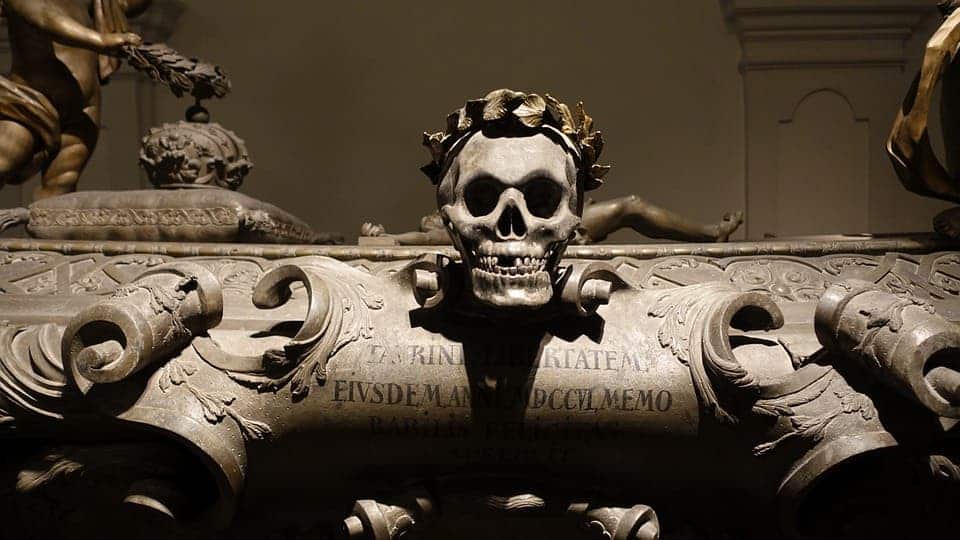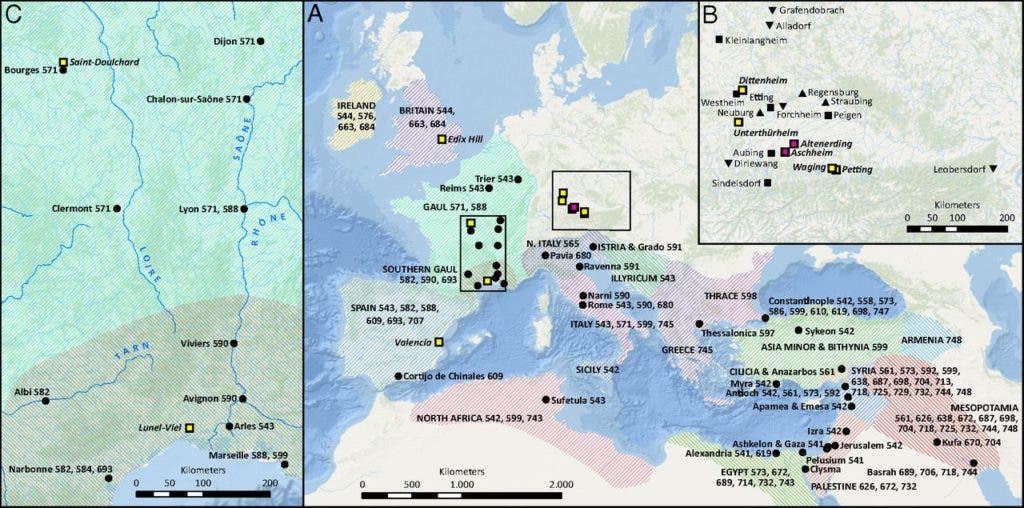New research shows that one of the deadliest plagues in the world was even more far-reaching than previously believed.

The work was carried out by an interdisciplinary team from the Max Planck Institute for the Science of Human History in Germany and the Harvard University. They covered 21 archaeological sites across Europe and the Mediterranean that date back to the Plague of Justinian, back in 541 A.D. They report that the plague affected even more of the world than previously believed, reaching as far as the post-Roman British Isles.
Plagues for days
“This study shows the potential of paleogenomic research for understanding historical and modern pandemics by comparing genomes across millennia,” Johannes Krause, director of the Max Planck Institute and co-director of the Max Planck-Harvard Research Center for the Archaeoscience of the Ancient Mediterranean and the paper’s corresponding author, said in a statement.
This outbreak was one of the deadliest events in humanity’s history, killing an estimated 25-50 million people (between 13-26%) of the world’s population at the time of its first outbreak. It nearly brought the Byzantine Empire and its neighboring Sasanian Empire to the brink of collapse. Justinian’s Plague was the single deadliest pandemic to afflict Europe (and perhaps the world as a whole) until the Black Plague, and made repeated appearances until the year 750. The Black Death is estimated to have killed every 1 in 2 or 3 people living in Europe at the time. It was caused by the same bacteria.
The Justinian Plague gets its name from the Byzantine Emperor Justinian, who ruled the eastern portion of the Roman Empire from Constantinople (today’s Istanbul) after the fall of Rome and the western Empire. The pandemic started during the reign of Emperor Justinian, and spread from Constantinople and ports around the Mediterranean. Accounts from the time say that the plague wiped out half of Constantinople’s population, although these have yet to be confirmed. Such impacts are still under active investigation by historians, archaeologists, and experts in ancient DNA at the Max Planck-Harvard Research Center for the Archaeoscience of the Ancient Mediterranean (MHAAM). In the current study, the team reconstructed the genomes of eight Y. pestis strains from samples gathered in France, Germany, Spain, and Great Britain.

Image credits Marcel Keller et al., (2019), PNAS.
Samples that the team recovered at these sites were examined for genetic traces of Yersinia pestis, the bacteria known to have caused the plague. The first finding was the confirmation that this was the plague that swept the Mediterranean during Justinian’s time, even if it is recorded under various names in historical documents.
Secondly, the team could chart the evolution of the bacteria over time. They report that the strains that popped over the two-century-long pandemic were quite diverse genetically. Samples taken during the latter days of the pandemic show Y. pestis had shed genes relating to two virulence factors, they explain.
“It’s a fantastic example of how we can get new results that are really important in a debate that, kind of paradoxically, is heating up right now about whether the Justinianic pandemic was an important thing or not, just as new evidence really starts to appear,” says paper co-author McCormick.
“The archaeological and archaeogenetic evidence is opening up a whole new — not just a chapter — a whole new book on this great story.”
The team also found traces of the plague in Britain, an area where it hadn’t been previously confirmed. The bacterial DNA found there is more basal, the team explains, which suggests that it arrived there directly from areas where the plague was first reported — such as Egypt — rather than the Roman Empire.
“If that’s so,” McCormick said, “that suggests almost direct transmission from Egypt to Britain.”
This last tidbit is especially interesting. Given that the plague spread from and around the Mediterranean, one would assume that any Y. pestis in Britain would have been carried there by Romano-Celts moving into the islands after the Romans left, a century later. However, the team found the bacteria in an Anglo-Saxon cemetery, among people who were expanding their control of Britain at the time. The question now is how the four infected individuals in Britain contracted the plague — a finding which the team says will give us a better understanding of the social, political, and economic dynamics of the day.
McCormick said researchers will continue to expand the picture of this period, focusing on the role the plague played not just in human health, but, given its extraordinary death rate, also in warfare, politics, economics, and a whole host of other human activities.
“We now have a pathogen whose molecular history we can follow for thousands of years,” McCormick said, adding that our understanding of the plague’s impact on this era will continue to grow. “The jury’s out, evidence is accumulating, and we’re all going to learn as we go forward.”
The paper “Ancient Yersinia pestis genomes from across Western Europe reveal early diversification during the First Pandemic (541–750)” has been published in the journal PNAS.






